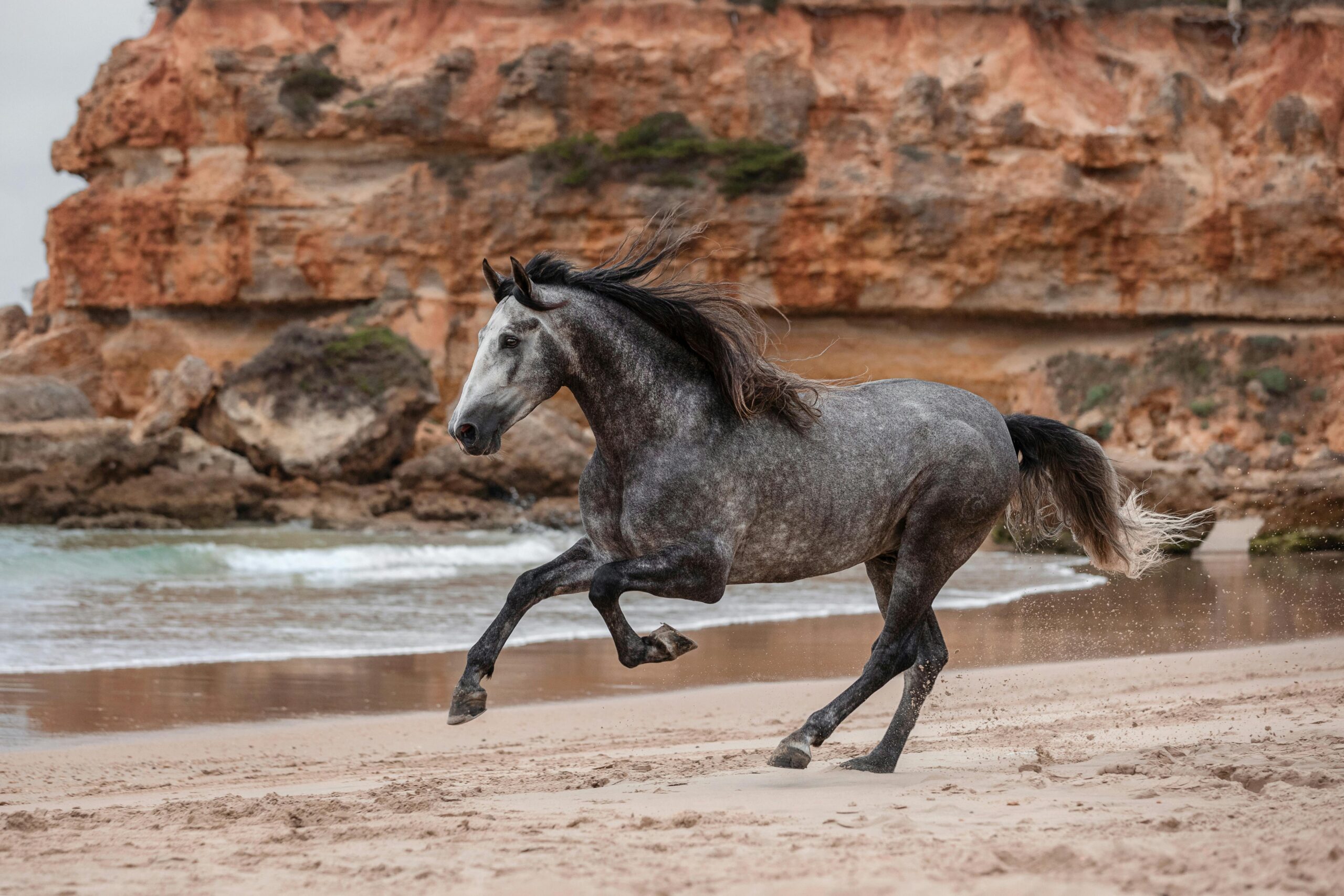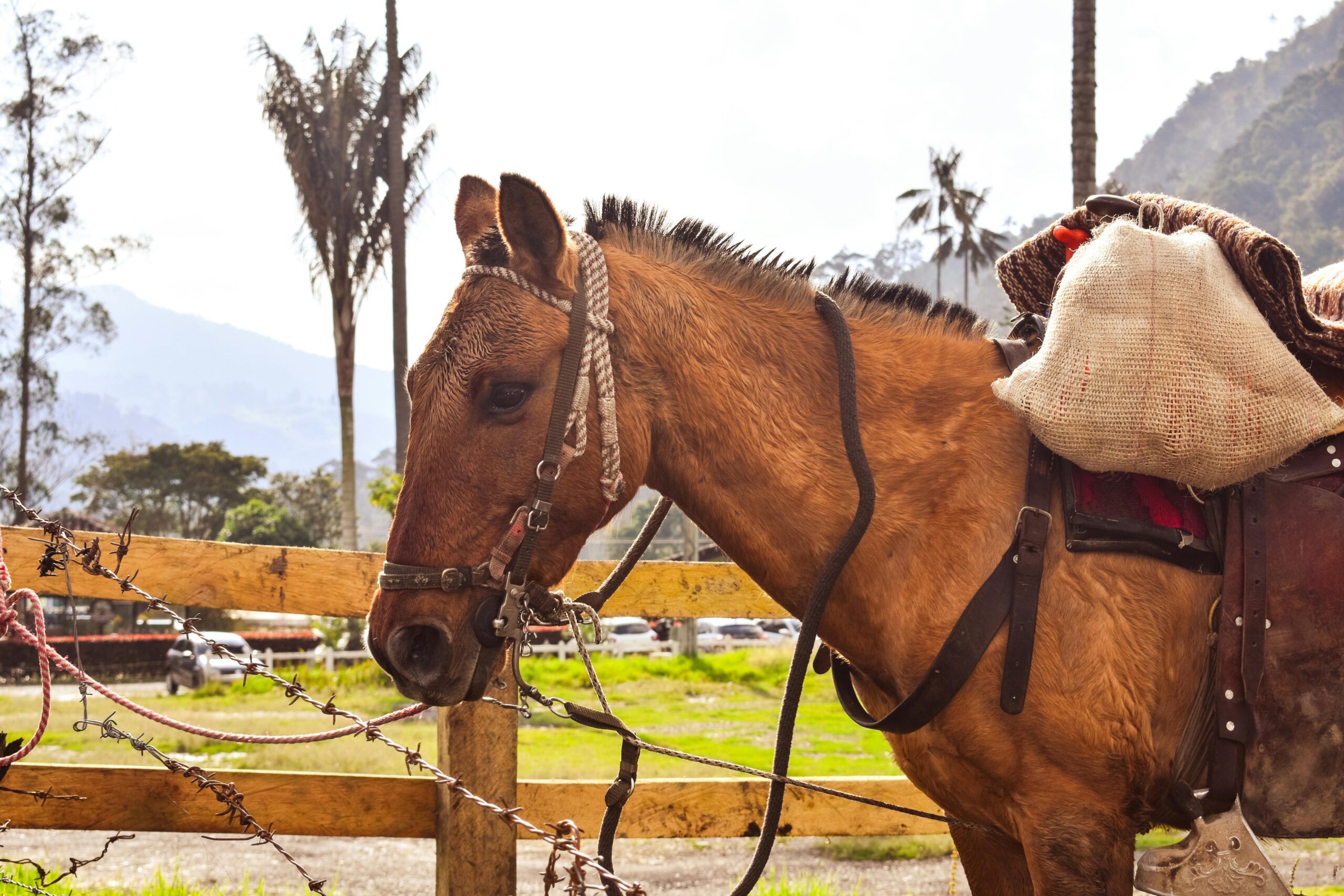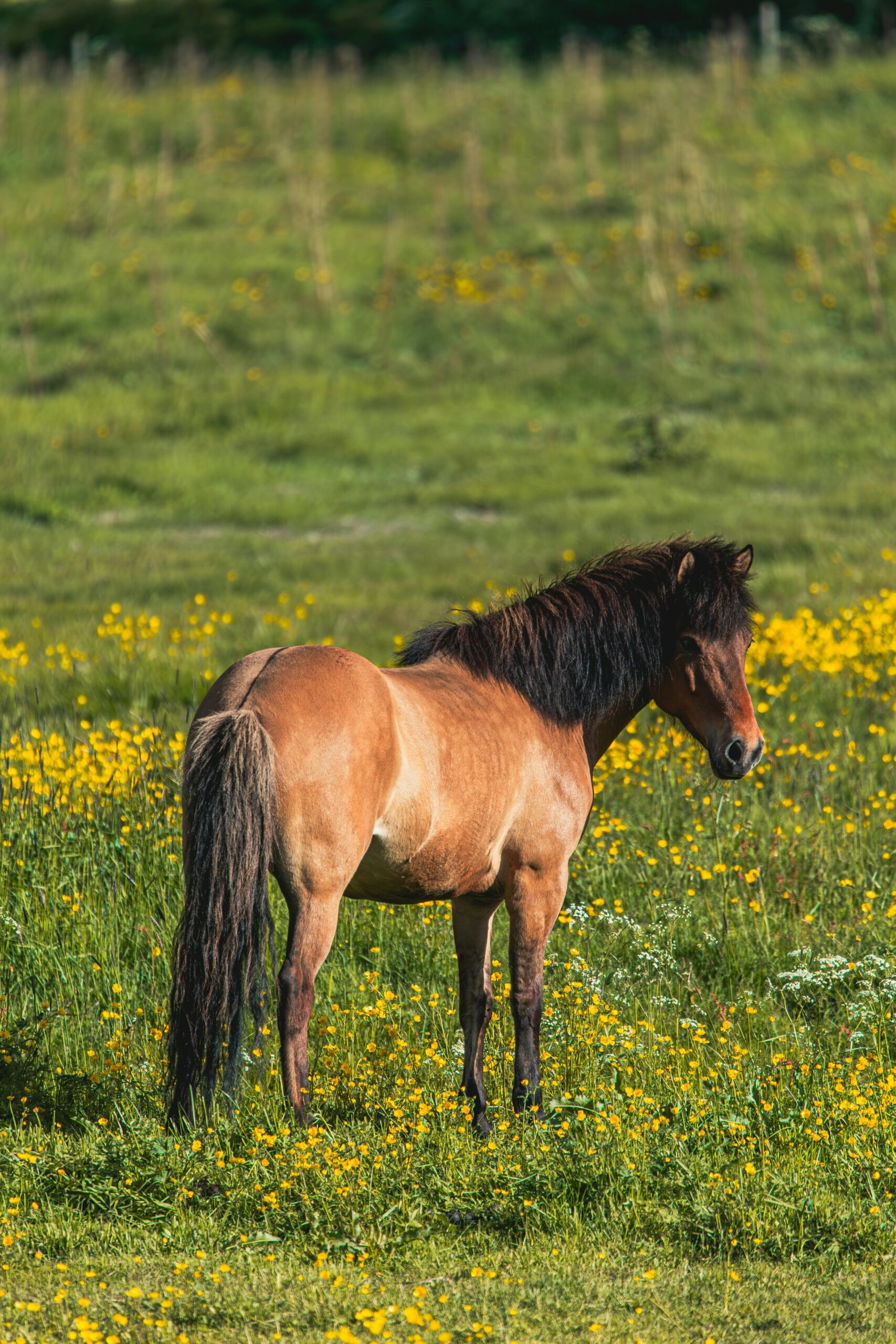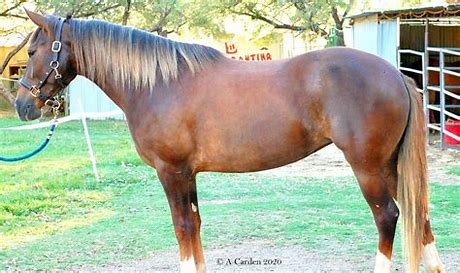History and Origin of the Spanish Barb Horse
Ancient Roots
Iberian Peninsula and North Africa
Hereditary Lines: The Spanish Thistle horse slips from the out of date horses of the Iberian Expanse of land and the Point horse from North Africa. These regions were by and large known for conveying generous, agile, and persisting through horses.
Getting through Qualities
Flexibility: The Spanish Thorn acquired the versatility of its predecessors, making it reasonable for various conditions and uses.
Flexibility: The variety’s blend of qualities from the Iberian and Thorn ponies added to its standing as a flexible and solid pony.
Verifiable Records
Documentation: Verifiable records, including antiquated texts and archeological discoveries, give experiences into the meaning of these early ponies and their impact on the advancement of the Spanish Barb.
Influence of the Point Pony: The Thorn horse, known for its perseverance and flexibility, fundamentally affected the improvement of pony breeds in the Iberian Landmass, adding to the remarkable attributes of the Spanish Spike.
Iberian Peninsula Origins
Familial Lines: The Spanish Spike horse slides from the antiquated ponies of the Iberian Landmass and the Point horse from North Africa. These districts were generally known for delivering strong, spry, and persevering through ponies.
Persevering through Qualities
Versatility: The Spanish Spike acquired the flexibility of its progenitors, making it reasonable for various conditions and uses.
Flexibility: The variety’s mix of qualities from the Iberian and Point ponies added to its standing as a flexible and solid pony.
Verifiable Records
Documentation: Verifiable records, including antiquated texts and archeological discoveries, give experiences into the meaning of these early ponies and their effect on the improvement of the Spanish Barb.
Influence of the Point Pony: The Spike horse, known for its perseverance and flexibility, essentially impacted the advancement of pony breeds in the Iberian Landmass, adding to the novel qualities of the Spanish Thorn.
North African (Barb) Origins
Point Pony
Authentic Foundation: The Thorn horse, beginning from North Africa, especially the Maghreb district (cutting edge Morocco, Algeria, and Tunisia), is known for its perseverance and flexibility to abandon conditions.
Effect on Iberian Ponies: Thorn ponies were acquainted with the Iberian Landmass through exchange and victories. Their impact on nearby pony breeds added to the improvement of the Spanish Point.
Attributes
Actual Characteristics:Thistle horses are depicted by their light, athletic structure, high perseverance, and adaptability. They generally have a conspicuous head, long legs, and a significant chest.
Flexibility: Thistle horses were generally around acclimated to severe circumstances, including deserts and rough areas.
Crossbreeding and Development
Iberian and Spike Crossbreeding
Verifiable Crosses: The crossbreeding between the Iberian horses and Spike horses achieved the Spanish Point, joining the strength and determination of the Thistle with the versatility and deftness of the Iberian assortments.
Hereditary Heritage: This crossbreeding framework added to the Spanish Spike’s specific characteristics, including its more modest structure, perseverance, and adaptability.
Job in Old Societies
Military Use:The Spanish Spike’s antecedents were regarded by obsolete social orders for their usage in battling. Their deftness and tirelessness made them proper for cavalry and fight.
Social Significance: The horses from the two districts were important to the social orders they served, influencing agrarian practices, transportation, and military frameworks.
Preservation of Traits
Getting through Qualities
Flexibility:The Spanish Spike procured the flexibility of its begetters, making it sensible for various circumstances and utilizations.
Flexibility: The assortment’s mix of characteristics from the Iberian and Point horses added to its remaining as a versatile and strong horse.

Verifiable Records
Documentation: Undeniable records, including old texts and archeological disclosures, give pieces of information into the significance of these early horses and their effect on the progression of the Spanish Point..2. Prologue to the Americas.
16th Century Exploration
Spanish Conquistadors:The Spanish Thorn was brought to the Americas by Spanish adventurers, known as conquerors, during the sixteenth hundred years. They assumed a basic part in the investigation, colonization, and settlement of the New World.
Transport and Variation: These ponies were shipped across the Atlantic and adjusted to the different and frequently unforgiving conditions of the Americas, including deserts, fields, and mountains.
Role in Development of American Breeds
Foundation for New Breeds
Mustang: The Spanish Thorn is one of the central types of the Colt, the notorious wild pony of the American West. Colts acquired numerous attributes from the Spanish Point, like their toughness and flexibility.
American Quarter Horse: The Spanish Spike likewise added to the improvement of the American Quarter Pony, known for its speed and deftness, particularly in brief distance races and steers work.
Criollo and Other Latin American Breeds: Past North America, the Spanish Thorn affected the advancement of a few Latin American varieties, including the Criollo, which is generally involved across South America for farming and other work.
Cultural and Historical Significance
Symbol of Heritage: The Spanish Spike holds social importance as an image of the rich equestrian legacy carried by the Spanish to the New World. It addresses the tradition of Spanish impact in the improvement of pony breeds across the Americas.
Historical Reenactments and Preservation:The variety is in many cases highlighted in authentic reenactments and safeguarding endeavors that feature its job in the investigation and settlement of the Americas, as well as its commitment to the social embroidered artwork of the district.
This framework gives an itemized outline of the starting points and verifiable improvement of the Spanish Thorn horse, underlining its huge commitments to different American pony breeds and its persevering through social significance.
Physical Characteristics of the Spanish Barb Horse
Size
Height: Spanish Point ponies ordinarily stand between 14 to 15 hands at the shrivels. This size is viewed as medium, mirroring a harmony between strength and nimbleness.
Build
Overall Structure: The variety is known for a reduced, durable form. They have a proportional and strong casing without being excessively cumbersome, making them both dexterous and versatile.
Musculature: They display clear cut muscles, especially in the neck, shoulders, and rump, which add to their power and perseverance.
Head
Shape and Profile: The top of the Spanish Spike is frequently refined, with a straight or somewhat raised profile, giving it a respectable and ready appearance.
Facial Features: They for the most part have enormous, expressive eyes and all around put ears, which improve their general ready and clever articulation.
Neck
Structure: The neck is very much curved and of medium length, giving a decent harmony among adaptability and strength. This trademark supports their deftness and responsiveness.
Connection to Body: The neck advances flawlessly into very much slanted shoulders, considering free and proficient movements.
Body
Chest: They have a profound chest, which takes into consideration adequate lung limit, adding to their perseverance and endurance.
Back and Croup: The back is ordinarily, major areas of strength for short, straight, while the croup is adjusted and strong. This design upholds strong rump, helping with fast speed increase and mobility.
Barrel: The body is all around sprung, major areas of strength for demonstrating confine structure, which is significant for generally wellbeing and perseverance.
Legs
Bone Structure:The legs are solid and very much boned, with clear cut joints that help the pony’s athletic abilities.
Hooves: The hooves are for the most part hard and strong, appropriate for different landscapes, mirroring the variety’s set of experiences of variation to assorted conditions.
Tendons and Joints:The ligaments are advanced and clean, demonstrating adequacy and sturdiness, which are critical for execution and life span.
Color
Common Colors: The Spanish Thorn is usually found in strong varieties like narrows, chestnut, dark, and dim. These varieties are common in the variety because of their hereditary genealogy.
Variety: While strong tones are normal, there is a scope of satisfactory varieties inside the variety, including varieties like dun, roan, and infrequently palomino.
Markings:They might have negligible white markings, which regularly show up on the face and legs. Exorbitant white markings are by and large more uncommon and are not a main quality of the variety.
This definite layout of the Spanish Thorn pony’s actual attributes features the variety’s fair and flexible nature, which adds to its versatility and strength in different jobs and conditions.
Temperament of the Spanish Barb Horse
Intelligent
Quick Learners: Spanish Points are known for their knowledge, which makes them fast students and receptive to preparing. This attribute permits them to comprehend and execute orders proficiently, making them appropriate for the two novices and experienced riders.
Alertness: They are normally ready and mindful of their environmental factors, which adds to their capacity to respond suitably to different circumstances, whether in work, game, or relaxation activities.
Versatile
Adaptability:The Spanish Thorn horse is profoundly versatile, fit for succeeding in a large number of disciplines. This flexibility makes them important in different jobs, including trail riding, perseverance contests, farm work, and that’s just the beginning.
Multifaceted Skills:Their versatility stretches out to both physical and mental difficulties, permitting them to be prepared for various kinds of work, from crowding dairy cattle to acting in equestrian games.
Enduring
Stamina:One of the variety’s champion characteristics is its remarkable endurance and perseverance. Spanish Points can keep consistent execution over lengthy separations and broadened periods, a trademark acquired from their Thorn precursors.
Resilience: They are notable for their versatility, which incorporates actual perseverance as well as the capacity to endure shifting natural circumstances, making them dependable accomplices in different settings.
Gentle
Temperament: Spanish Points are frequently portrayed as having a delicate and quiet disposition. This makes them receptive and alright for riders of all levels, including kids and novices.
Willingness to Work: They for the most part have a willing and helpful nature, which makes them receptive to riders and controllers. This attribute improves their teachability and makes them charming to work with.
Companionable: Their delicate nature reaches out to their cooperations with people, frequently framing solid bonds with their proprietors and showing dependability and friendship.
These demeanor characteristics add to the Spanish Spike’s standing as a solid and flexible pony, appropriate for various jobs and conditions. Their knowledge, versatility, perseverance, and delicate nature go with them a leaned toward decision among equestrians and pony fans.
Uses and Roles
Historical Uses
Warfare
Cavalry Horses: Spanish Spikes were exceptionally valued by Spanish conquerors and local champions the same for their dexterity, speed, and perseverance in fight.
Mounts for Nobility: Because of their respectable appearance and energetic nature, they were additionally preferred as mounts for military pioneers and honorability.
Exploration
Colonial Expansion: Assumed a vital part in the Spanish investigation and colonization of the Americas, assisting with laying out and keep up with new settlements.
Transportation: Involved by pioneers and pilgrims for really long travel across testing landscapes, adding to the extension of regions.
General-Purpose Workhorses
Agriculture: Utilized in different rural undertakings, including furrowing fields and grouping animals.
Trade and Communication: Filled in as fundamental method for transportation for products and messages across huge distances.
Modern Uses
Endurance Riding
Competitive Sports: Succeed in perseverance riding occasions, where their capacity to keep up with speed and endurance over significant distances is exceptionally esteemed.
Recreational: Likewise famous among sporting riders who appreciate significant distance trail rides.
Trail Riding
Recreational Use: Their solid and quiet disposition makes them well known for relaxed rides, particularly in regular and tough landscapes.
Eco-Tourism: Frequently utilized in eco-the travel industry for directed horseback visits, where their authentic and social importance can be featured.
Ranch Work
Cattle Herding: Utilized in steers farming for undertakings like arranging and crowding, profiting from their dexterity and fast reaction.
Versatility: Their flexibility permits them to adjust to different farm assignments, remembering working for unforgiving conditions.
Pleasure and Show Horses
Family Horses: Because of their delicate and versatile nature, they are appropriate for family use, including youngsters and amateur riders.
Equestrian Shows: At times highlighted in horse shows and displays, exhibiting their remarkable qualities and authentic heredity.
Preservation Efforts
Breed Conservation
Genetic Preservation: Endeavors are centered around keeping up with the hereditary immaculateness of the variety to protect its authentic attributes.
Breeding Programs: Coordinated rearing projects are fundamental for expanding the populace and guaranteeing the wellbeing and variety of the variety.

Cultural and Historical Significance
Education and Awareness: Advancing information about the variety’s set of experiences and its effect on other pony breeds is critical to conservation.
Legacy Projects: Cooperation in social legacy programs and verifiable reenactments to teach general society about the variety’s part ever.
Organizations and Support
Spanish Barb Breeders Association:Gives assets, support, and systems administration valuable open doors for raisers and devotees.
Library and Documentation: Keeping up with thorough records and vaults to follow bloodlines and families, guaranteeing the variety’s progression.
This extended blueprint underlines the different jobs that the Spanish Spike horse has played since forever ago and keeps on playing in current times, alongside the basic endeavors to protect this remarkable variety.
Conservation Status of the Spanish Barb Horse
Rare Breed
Population Status: The Spanish Thorn is viewed as an interesting variety, with moderately little numbers contrasted with more normal pony breeds. This extraordinariness is expected to a limited extent to the variety’s verifiable restricting as it was supplanted by different varieties more qualified to changing necessities and conditions.
Hereditary Variety: Keeping up with hereditary variety is a vital worry for moderates, as the restricted populace can prompt inbreeding and loss of exceptional hereditary qualities that characterize the variety.
Conservation Efforts
Dedicated Breeders: There are devoted reproducers focused on the protection of the Spanish Spike. These reproducers center around keeping up with the variety’s exceptional qualities, like its actual attributes, demeanor, and authentic heredity.
Breed Registries: Associations like the Spanish Point Raisers Affiliation keep up with vaults and family records, assisting with following and deal with the variety’s hereditary wellbeing and immaculateness. These libraries are urgent for distinguishing and safeguarding thoroughbred people.
Public Awareness and Education:Tries are being made to uncover issues about the Spanish Spike’s obvious significance and current status. Informational ventures and public introductions help with enlightening people about the assortment and its importance to equestrian history.
Rearing Projects: Coordinated replicating programs mean to assemble the general population size while staying aware of innate assortment. These undertakings habitually incorporate wary decision of replicating matches to work on worthwhile characteristics and avoid genetic bottlenecks.
Challenges and Goals
Population Growth:One of the essential objectives of protection endeavors is to expand the quantity of thoroughbred Spanish Points. This incorporates finding and enlisting unnoticed people that satisfy breed guidelines.
Social Protection: notwithstanding organic preservation, safeguarding the social legacy related with the Spanish Point is significant. This incorporates perceiving the variety’s authentic job in the Americas and its commitments to different varieties.
Supportability: Guaranteeing the maintainability of the variety includes adjusting the requirement for expanded numbers with the safeguarding of hereditary wellbeing. This requires progressing exploration, checking, and variation of rearing techniques.
The Spanish Spike’s preservation status features the requirement for proceeded and composed endeavors to safeguard this generally critical and hereditarily one of a kind pony breed. Through the joined endeavors of raisers, associations, and devotees, the objective is to get a steady and developing populace for people in the future.
Organizations and Associations for the Spanish Barb Horse
Spanish Barb Breeders Association (SBBA)
Overview: One of the essential objectives of preservation endeavors is to build the quantity of thoroughbred Spanish Spikes. This incorporates finding and enlisting unnoticed people that fulfill breed guidelines.
The Spanish Thorn Reproducers Affiliation is one of the essential associations devoted to the safeguarding, advancement, and investigation of the Spanish Point horse. It fills in as a focal center point for reproducers, proprietors, and lovers who are energetic about keeping up with the variety’s one of a kind qualities and verifiable heritage.
Mission: The SBBA’s main goal incorporates protecting the hereditary honesty of the variety, advancing public mindfulness, and supporting raisers in their preservation endeavors. The affiliation likewise tries to teach general society about the authentic importance and present day uses of the Spanish Thorn.
Programs and Registries
Breed Standards: The SBBA and other related associations keep up with itemized breed guidelines to guarantee that the qualities characterizing the Spanish Spike are safeguarded. These principles remember rules for actual qualities, demeanor, and hereditary ancestry.
Heredity Records: Libraries kept up with by the SBBA report the families of Spanish Spike ponies. This guarantees the immaculateness of the variety and helps with recognizing and forestalling inbreeding. Exact records are fundamental for following the hereditary wellbeing and variety of the populace.
Reproducing Projects: To help the development and wellbeing of the Spanish Spike populace, the SBBA coordinates and advances mindful rearing projects. These projects center around expanding the variety’s numbers while keeping up with hereditary variety and wellbeing.
Publications and Resources: The SBBA gives a scope of instructive assets, including bulletins, distributions, and online substance, to illuminate and connect with people in general and individuals about the variety. These assets cover subjects like reproducing best practices, authentic bits of knowledge, and news inside the Spanish Thorn people group.
Occasions and Contests: The association may likewise support or take part in occasions that feature the Spanish Point, for example, horse shows, perseverance rides, and authentic reenactments. These occasions assist with advancing the variety and give valuable open doors to individuals to interface and team up.

Global and Local Initiatives
International Connections: While the SBBA basically works in the US, it perceives the worldwide legacy of the Spanish Point and looks to associate with comparative associations around the world. This global point of view helps in grasping the more extensive setting of the variety’s set of experiences and preservation.
Nearby Sections and Clubs: Neighborhood parts or associated clubs might exist under the umbrella of the SBBA, offering provincial help and local area for Spanish Thorn lovers. These gatherings frequently sort out nearby occasions, instructive meetings, and promotion endeavors.
Crafted by associations like the Spanish Thorn Reproducers Affiliation is indispensable for guaranteeing the fate of the Spanish Spike horse. Through organized programs, thorough principles, and boundless schooling, these associations assist with protecting the variety’s heritage and advance its proceeded with presence in the equestrian world.
Conclusion
The Spanish Spike horse, with its rich legacy and one of a kind qualities, remains as a momentous demonstration of the mixing of verifiable equine genealogies. Starting from the Iberian Landmass and North Africa, this breed typifies a tradition of perseverance, flexibility, and versatility. Its verifiable roots in antiquated military, farming, and investigation settings feature its basic job in molding the equestrian world across mainlands.
From first experience with the Americas by Spanish voyagers in the sixteenth 100 years, the Spanish Thorn contributed essentially to the advancement of other famous American varieties, for example, the Colt and the American Quarter Pony. Its getting through qualities — knowledge, flexibility, endurance, and delicate nature — have made it an esteemed resource in current equestrian disciplines, including perseverance riding, trail riding, and farm work.
Notwithstanding its verifiable and practical importance, the Spanish Thorn stays an uncommon variety, confronting difficulties connected with preservation and hereditary variety. Devoted endeavors by associations like the Spanish Thorn Reproducers Relationship, alongside rearing projects and public mindfulness crusades, are critical to protecting this breed’s extraordinary attributes and guaranteeing its proceeded with presence in the equestrian world.
The Spanish Spike pony’s mix of verifiable significance, actual traits, and demeanor makes it an image of equestrian legacy and a demonstration of the rich embroidery of pony reproducing history. Through continuous protection endeavors and devoted stewardship, the tradition of the Spanish Thorn is safeguarded for people in the future, praising its commitments to at various times equestrian undertakings.
Frequently Asked Questions (FAQ) About the Spanish Barb Horse
What is the Spanish Barb horse?
The Spanish Spike is a verifiable pony breed beginning from the Iberian Landmass and North Africa. It is known for its perseverance, flexibility, and versatility. The variety assumed a huge part in the improvement of a few American pony breeds.
What are the key physical characteristics of the Spanish Barb?
The Spanish Point regularly remains between 14 to 15 hands at the shrinks. It has a smaller, solid form, a very much curved neck, a refined head with a straight or marginally raised profile, major areas of strength for and, boned legs. Normal tones incorporate narrows, chestnut, dark, and dim.
What is the temperament of the Spanish Barb horse?
Spanish Points are known for their insight, adaptability, and perseverance. They have a delicate and willing nature, making them reasonable for different riders and disciplines. Their sharpness and versatility make them dependable accomplices in various equestrian exercises.
What were the historical uses of the Spanish Barb?
By and large, Spanish Points were utilized in fighting, investigation, and as universally useful ponies. They were vital in the Spanish success of the Americas, filling in as mounts and pack creatures. They additionally added to the advancement of different American pony breeds.
What is the current conservation status of the Spanish Barb horse?
The Spanish Spike is viewed as an intriguing variety. Protection endeavors are continuous to safeguard its hereditary variety and verifiable importance. Associations like the Spanish Spike Raisers Affiliation work to keep up with breed norms, advance the variety, and backing reproducing programs.
How can I get involved in supporting the Spanish Barb breed?
You can uphold the Spanish Spike breed by studying it, going to raise related occasions, and spreading mindfulness. In the event that you’re keen on purchasing or reproducing Spanish Thorns, associate with associations like the Spanish Spike Raisers Relationship for direction and backing.
Where can I find more information about the Spanish Barb horse?
For more data, visit the Spanish Point Raisers Affiliation site or contact neighborhood breed associations. Furthermore, you can search for distributions, books, and online assets committed to the Spanish Spike horse.

